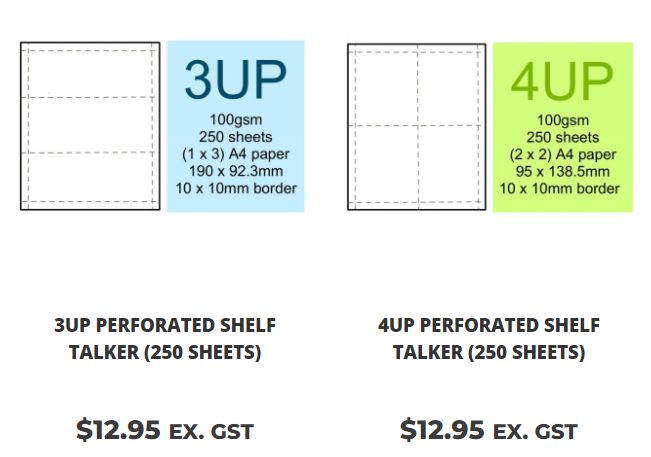When it comes to paper, most of us think of the traditional, unremarkable sheets we use in our daily lives for various purposes, from writing and printing to packaging and crafts. However, there’s another type of paper that offers a unique and valuable feature – perforated paper. In this article, we’ll delve into the world of perforated paper and explore why it matters in comparison to traditional paper.
What is Perforated Paper?
Perforated paper is essentially paper that has been pre-scored and punched with small, evenly spaced holes or slits. These perforations create a clean and precise line of weakness, allowing the paper to be easily torn or separated along those lines. The resulting detachable sections are often referred to as “tear-offs” or “perforated stubs.”
Perforated paper comes in various sizes and formats, including perforated a4 paper, rolls, and custom configurations. It is widely used in a range of applications, where the ability to detach sections cleanly and effortlessly is crucial.
Traditional Paper vs. Perforated Paper
To understand why perforation matters, let’s first compare it to traditional paper and examine the situations in which each type excels.
- Traditional Paper: Traditional paper, in its standard, unperforated form, is what we encounter in most everyday uses. It is plain, smooth, and unbroken, serving as a blank canvas for writing, printing, drawing, and more.
- Perforated Paper: Perforated paper shares many similarities with traditional paper, but its distinct advantage lies in the precision and ease of separation. It is created by adding rows of small holes or cuts, typically spaced at regular intervals along the paper’s surface. These perforations facilitate clean detachment, often resulting in two distinct sections: one that retains information or content and another that can be easily removed.
Why Perforation Matters
Now, let’s explore the specific situations and applications where perforated paper shines and why it matters:
- Forms and Surveys: Perforated paper is a valuable asset when it comes to forms and surveys. Think of feedback forms, questionnaires, or customer satisfaction surveys. The perforated stub allows respondents to tear off and retain a copy of their responses while submitting the primary form, making it easy to keep records or provide proof of submission.
- Tickets and Coupons: In the world of ticketing and promotions, perforated paper is indispensable. Event tickets, raffle tickets, and coupons often come in perforated formats. Attendees can conveniently tear off their ticket stubs while retaining the main part as proof of entry. Likewise, coupons can be easily detached for use at the point of sale.
- Invoices and Statements: Businesses that send out invoices, statements, or receipts can benefit from perforated paper. The perforated portion can serve as a detachable payment slip or return portion, allowing customers to send back their payments with ease while keeping a record of the transaction for their own records.
- Labels and Tags: Perforated paper is ideal for producing labels and tags that need to be applied and then removed cleanly. These labels are commonly used in retail, shipping, and inventory management. Once the label’s purpose has been served, the user can effortlessly tear it off without leaving any adhesive residue.
- Arts and Crafts: Perforated paper is a popular choice in arts and crafts for projects that require precise, tearable edges. This is particularly useful for making greeting cards, scrapbooking, or creating decorative items with detachable elements.
- Convenience and Efficiency: In any scenario where convenience and efficiency are critical, perforated paper can be a game-changer. For instance, it simplifies the distribution of conference agendas, where attendees can easily tear off their schedules while keeping the main program intact. Similarly, instruction manuals with detachable warranty or registration cards are more user-friendly.
- Record-Keeping: In professions such as healthcare, perforated paper is often used for patient charts and records. Doctors can tear off sections for immediate use, such as prescriptions or treatment plans, while maintaining a comprehensive patient history.
- Custom Solutions: Perforated paper offers a high degree of customization. It can be tailored to meet specific needs, whether it’s a unique pattern of perforations, a specific paper type, or a particular size. This flexibility is particularly valuable in business and marketing, where companies can create tailored materials for their customers.
The Advantages of Perforated Paper
So, why does perforation matter in these applications? Here are some of the key advantages:
- Clean Separation: Perforated paper ensures that the tear-off sections are cleanly separated without jagged edges or unsightly tears. This results in a professional and polished appearance.
- User-Friendly: It enhances the user experience by simplifying tasks such as filling out forms, tearing off tickets, or removing labels. Users appreciate the convenience of perforated paper.
- Efficiency: Perforation saves time and effort when detaching sections. This is especially valuable in high-volume or time-sensitive settings.
- Record-Keeping: Perforated paper facilitates record-keeping by allowing individuals to retain copies or proof of transactions. This is crucial for audits, warranties, and documentation.
- Customization: Perforated paper can be tailored to fit specific requirements, providing businesses and organizations with a versatile tool for their unique needs.
Conclusion
Perforated paper isn’t just a minor variation of traditional paper; it’s a game-changer in many practical applications. Its ability to facilitate clean separation and user-friendly experiences makes it indispensable in a wide range of industries and situations. Whether you’re looking to improve the efficiency of forms and surveys, enhance ticketing and coupon processes, or simplify record-keeping, perforated paper offers a solution that matters. Its advantages in cleanliness, convenience, and customization make it a valuable asset for businesses, organizations, and creative endeavors alike.






